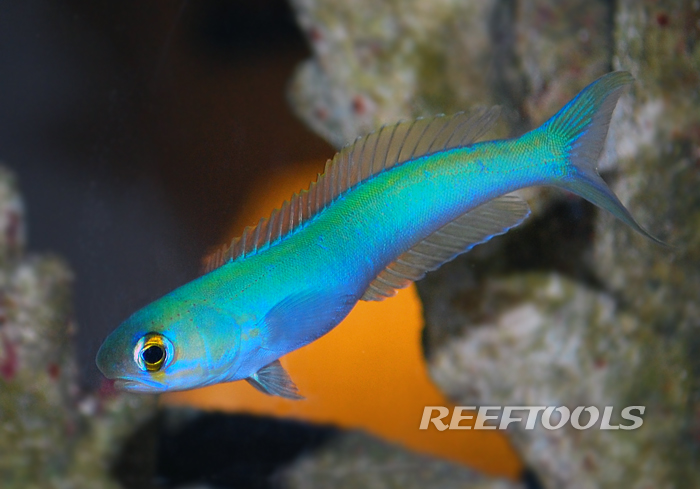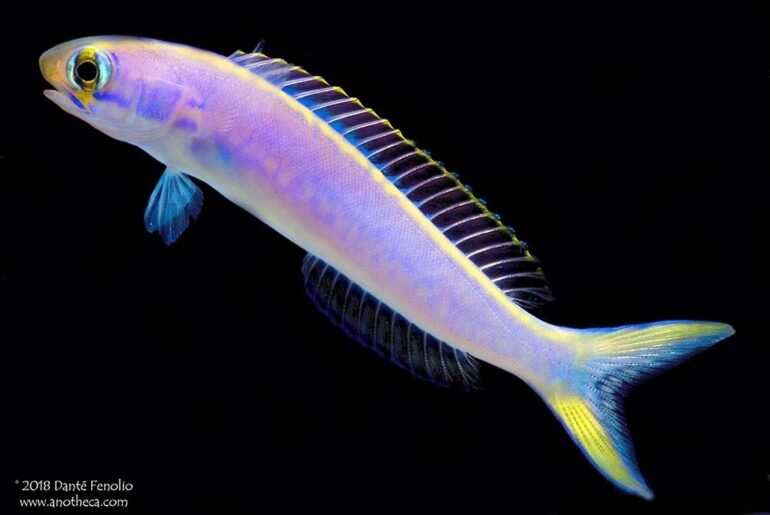The flashing tilefish, Hoplolatilus chlupatyi, is a unique reef fish with a very peculiar talent – the ability to rapidly change color. There’s many different groups of animals that can change their color and appearance; chameleons, cuttlefish and octopus, and some species of flounders are particularly adept at this ability but flashing tilefish are in a league of their own.
They don’t call H. chlupatyi the flashing tilefish for nothing, it doesn’t just change color gradually like most, but quickly alternates from yellow, to blue-green and pink back and forth like the flip of a switch. The normal resting coloration of the flashing tilefish is a pinkish blue green but when it gets excited or startled it can quickly turn a vivid blue, saturated pink, to a bright green back and forth with surprising speed.

While the flashing tilefish’s ability is well known, what has been less well understood is how it pulls off its super fast color changes. Like many animals that change color, the flashing tilefish has iridophores that can be reconfigured to alter the wavelengths of light that are reflected.
But whereas the platelets responsible for changing wavelengths are spread out throughout the iridophores in most animals, flashing tilefish have limited this structure to the edges of the iridophores, allowing them to change color as fast as they do. It is believed that flashing tilefish change color for communication and to confuse predators, but it is unique among a large genus of related species that don’t demonstrate this superpower. Now that we know how they do it, more research is needed to better understand why flashing tilefish exhibit this behavior.



